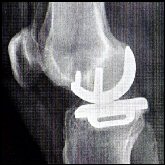
Moises J Goldman PhD and John Jonelis
Corporate resource allocation can get complicated—sometimes too complex to solve by ordinary human reasoning. When logic fails, how do you find common ground between stakeholders? Quantitative approaches can solve the problem but for those to work, everybody must understand the method and buy in. How can you do that with a critical budget allocation? We’ll give a practical example using AHP, de-mystify the process by walking through it by hand, and then provide a downloadable spreadsheet that solves the problem automatically. We’ll use only basic arithmetic.
AHP stands for the off-putting name of Analytic Hierarchy Process. It’s powerful. It’s direct. It parses and optimizes large numbers of variables that are beyond the scope of ordinary problem-solving methods. It can de-fuse nasty corporate politics. Problems are solved by the stakeholders themselves, using factors that are most relevant to them, based on their own needs and preferences. And it’s easy to do.

CRITICAL BUDGET ALLOCATION
Data Scientific Corporation (DSC) is a major software provider involved in state-of-the-art analytical methods in information and decision systems. The corporation works in the spheres of supply chain management, big data, robotics, and autonomous driving. Customers range from manufacturing to finance to healthcare to government. DSC is made up of three divisions:
- Division 1: Supply Chain Platform – Logistics, transportation management, freight, and inventory.
- Division 2: Big Data platform – data acquisition, information management, AI decision systems, and statistics.
- Division 3: Robotics platform – machine learning and implementation, autonomous driving, laser and microwave sensor arrays.
Each division markets a full-service platform of immense scale and all three are extremely expensive and require rigorous user training. Fortune 500 companies buy such products—nobody else. The paltry client diversification increases DSC’s risk and the limited demand squeezes their margins.
The board determines that corporate growth — and long-term survival — depends on broadening their market. They decide to widen their customer base from the Fortune 500 to the Russell 2000 universe of companies. To accomplish this, they embark on a radical strategy: they will decouple their unwieldy software platforms and market the components as less-expensive standalone modules.
This solution will require a sweeping overhaul of their technology and enormous R&D costs. Decoupling should stabilize receivables and boost margins but will require a fundamental shift from a platform as a service model (PAAS) to a software as a service model (SAAS). It’s high-risk/high-reward.
The board approves a huge expenditure but as is typical, not a fatty one and so the CEO must sharpen his pencil to implement the change. He recognizes that optimum use of these resources is crucial. He sees no obvious solution. No matter what he does, everybody will be dissatisfied.
His must address three major challenges:
- Complexity: At both the corporate and division level, technology is tightly intertwined. A change in one can affect all. There are too many variables to carry in one’s head, and if he gets this wrong, he could crash the corporation. How can he make an informed decision?
- Politics: If he just lets the division managers duke it out, they’ll reach an impasse. Even if they find some sort of compromise, how will it ever prove technically optimum? If he mandates a targeted allocation from the top, who will be satisfied? No matter what he does, the CEO foresees resentment, resistance, and disruption, with key employees leaving in a huff to work for competitors or even to form their own competing concerns. How to get everybody moving in the same direction?
- Accountability: This is a publicly traded corporation and its future rests on his shoulders. How does he head-off finger pointing between the divisions? How does he justify his work to the board and the shareholders who habitually second-guess his decisions?
The CEO feels squeezed. What are his options?
- Equal split: In a show of fairness, he might summarily allocate a third of the resources to each division, take a trip to Acapulco, and say, “Lemme know how it works out.” It may seem counterintuitive, but that would never prove equitable. The software of each division is different from the others in architecture and complexity as well as in the market it serves. One division faces stiffer competition; another is growing more quickly. Margins are dissimilar, as are capital needs. The CEO knows that to make the best use of limited resources, divisions must share as much technology as possible. He must act strategically.
- Executive privilege: He might simply implement a solution of his own, but that would merely be a stab in the dark—unworkable for both practical and political reasons. Given the bewildering array of variables, how can he expect to find the optimum allocation? Yet, optimum it must be. When his mandate proves inequitable how can he expect the divisions to cooperate? He foresees a mess.
- Quantitative decision making: He’s familiar with the AHP process of quantitative decision making. As far as he knows it’s not been applied to the critical allocation of resources but in recent years it’s gained traction across an ever-widening set of problems. He decides to try it.

SOLUTION
Analytic Hierarchy Process (AHP) was developed by Thomas L Saaty in the 1970s. It’s remarkably intuitive. It accepts a blend of hard and soft decision inputs, from the highly technical to the psychological. It’s been used to solve problems as simple as choosing the right college, and as complex as finding the exact wind speed at which a suspension bridge destroys itself by unstable oscillation. It identifies the best path through a spaghetti bowl of variables. It’s straightforward to use. Its math is basic and simple.
The CEO lays out the work in three steps: Define, Rank, Optimize.
Define – For three days, he meets with the three division heads behind closed doors, hammering out technical challenges, market issues, financial implications, logistics, and assigning costs to a myriad of details. How will one division implement the strategy without negatively impacting another? What can they share?
For the purposes of this article, we’ll present only three overarching variables: A, B, and C. These are all the same modularization program applied uniquely to each division. Each will look somewhat different.

Rank – Now the problem is defined. The team moves on to ranking the strategies based on the needs of each division. They can take either of two approaches.
- Each division manager can withdraw to a silo and work independently.
- Division heads can work on their rankings as a team. Since they’re already tracking well together, the CEO chooses this approach, hoping that cooperation and cross-fertilization will lead to superior results.
The ranking process is a simple one. What’s more important to Division 1—A or B? If it’s A, how much more important? The team assigns numerical rankings using simple prime numbers: 7 if extreme, 5 if strong, 3 if moderate, and 1 if equal. If A is less important than B, the inverse is entered. Then A is compared to C and B to C. These kinds of simple pairwise comparisons are an easy way to arrive at robust decisions.

Optimize – Once the division heads define and rank the elements, their work is done. AHP now performs the heavy lifting. It optimizes for the many interactions and presents the answer in percentage form.
After the initial shock, each team member sits back and smiles. Who can argue? It’s all based on the needs of each division. It’s defined by them. It’s their own analysis. All that’s left is to implement the plan.

A WALK THROUGH
Step 1 – Pairwise comparison of strategies:
The rankings are entered into a simple matrix. For example, Division 1 feels that A is moderately more important than B, so the number 3 is assigned. Notice that it makes no difference whether the decision point is technical, financial, or psychological—the units are always normalized to one another.

There’s a fourth column here called “Corporate.” The CEO ranks the divisions themselves by their importance to the organization as a whole. As before, these are simple head-to-head comparisons. To avoid divisiveness, he ranks division importance based on a hard number—in this case, each division’s previous year’s net profit. Based on that, Division 1 is the most important, followed by Division 2.
- STOP! Once all the rankings are entered, the team’s work is done—the computer does the rest. But to feel any confidence in the process, every stakeholder must know how it works, so let’s look under the hood and see what’s happening. We’ve reduced the entire process to a few steps, using basic arithmetic.
Step 2 – Lay out rankings in matrix form: The computer grabs the values from the Step 1 selections (shown in yellow) and populates the entire matrix.

Step 3 – Sum the columns:

Step 4 – Divide each Step 2 element by its Step 3 sum.

Step 5 – Average the Step 4 rows.

Step 6 – Cross-multiply and sum the Step 5 columns: For example, (A1*D1 + A2*D2 +A3*D3). This is the dollar allocation for each division, displayed in simple percentages.

CONCLUSION
The team has arrived at the impossible:
- They’ve arrived at the optimum solution.
- The decision can be implemented with no political baggage.
- Their logic is easy to explain and readily tracked by the board.
We invite you to try various other inputs on the provided AHP Calculator (Download into Excel if you wish to edit.) The formulas are visible and you might consider building a more complex model that meets a particular need.
Download this article in PDF format.

FURTHER INFORMATION

Moises J Goldman PhD has served as CEO, COO, and CTO with organizations across North America, South America, and Europe. Doctorate in systems engineering and inertial navigation systems, MBA. Principal scientist US Army Combat Development (CDEC). Initiated US Army National Training Center. Served on boards for MIT and IIT. Founding member IMSA Talent. Dr. Goldman is the author of the historical novel Taetae’s Promise. See bio.
Read article – TO BE OR NOT TO BE HACKED

Chicago Venture Magazine is a publication of Nathaniel Press www.ChicagoVentureMagazine.com Comments and re-posts in full or in part are welcomed and encouraged if accompanied by attribution and a web link. This is not investment advice. We do not guarantee accuracy. Please perform your own due diligence. It’s not our fault if you lose money. Copyright © 2023 John Jonelis – All Rights Reserved
.
.





































































































































































